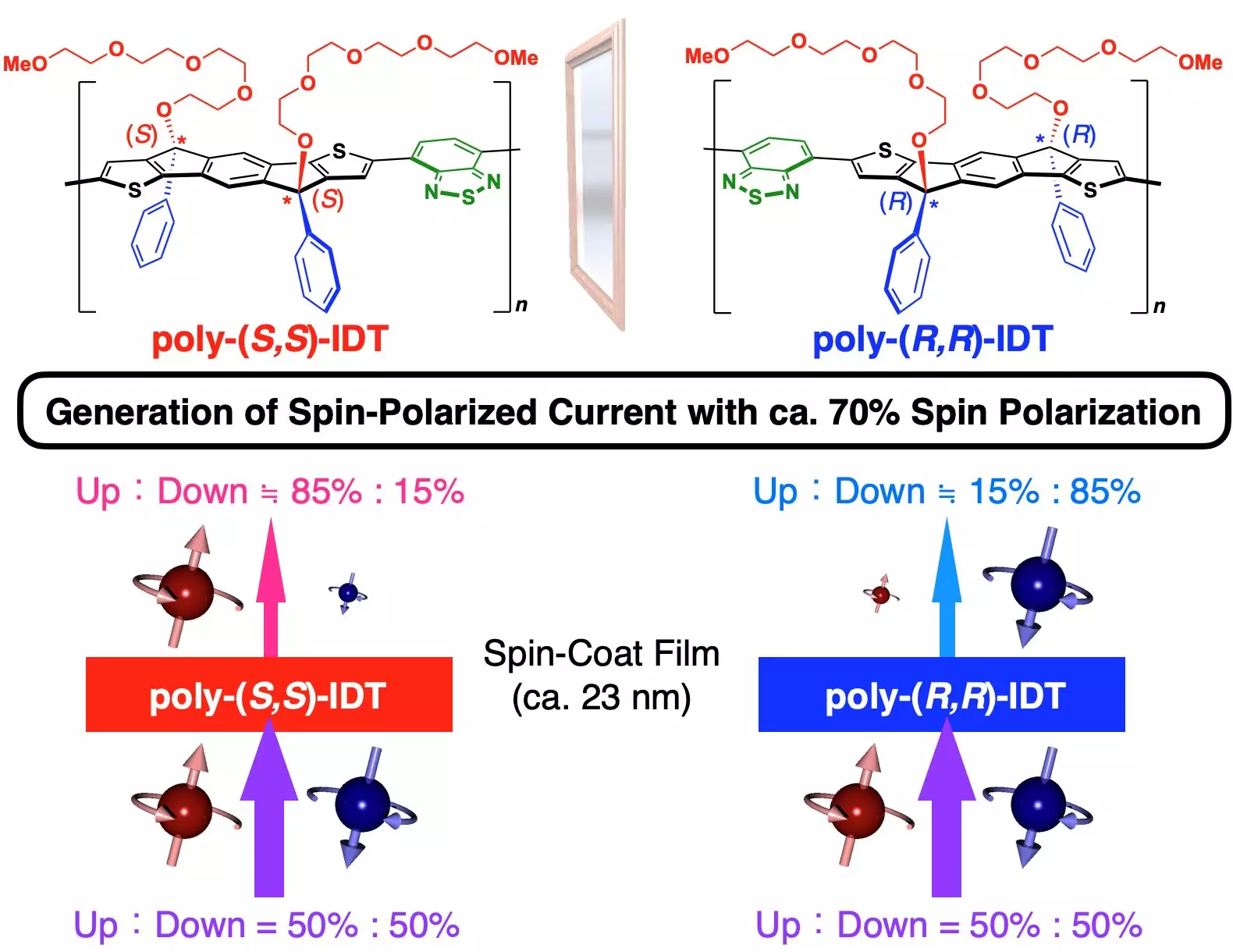Chirality, a phenomenon that arises when a molecule exists in two forms that are mirror images of each other, stands at the forefront of many contemporary scientific discussions. The critical difference between these chiral molecules lies in their “handedness,” leading to unique interactions with light and electrical currents. In essence, while the molecular composition remains identical, their structural orientation imparts distinct characteristics that are not merely academic but have potential practical applications, especially in the burgeoning field of spintronics.
A recent investigation highlighted in *Chemical Communications* by a research team from Osaka University reveals exciting advancements in the application of chiral copolymer films. These films exhibit remarkable spin polarization capabilities, effectively functioning as spin filters that differentiate between electrical currents of opposing polarizations. This study illustrates not only the intricate nature of chirality but also the innovative methods employed to synthesize polymers with chiral backbones.
The researchers successfully produced a chiral indacenodithiophene (IDT) derivative that served as the foundational monomer for their copolymers. The inclusion of IDT units was pivotal, granting the resultant films their chiral properties. This method’s simplicity is noteworthy compared to other polymer films, which traditionally require intricate synthesis processes. By employing spinning coating techniques, the team demonstrated that effective chiral films could be produced with ease, setting the stage for practical applications in modern technology.
A focal point of this research was the evaluation of chirality-induced spin selectivity (CISS) within identical films. Utilizing atomic force microscopy, the team meticulously assessed the material’s response to polarized currents under varying conditions. The interaction of a neodymium magnet with the film observed the spin polarization strengths, with notable performance: nearing 70%. This metric places the IDT copolymer films among the most significant advancements observed in the domain of chiral polymers, showcasing their potential viability in the advanced designs of spintronic devices.
These findings carry weighty implications, particularly as the demand for more efficient electronic systems escalates. The ability of these IDT copolymer films to serve as effective spin filters answers a crucial need in the integration of electron spin and charge, laying groundwork for spintronic devices that operate with enhanced efficiency and lower power consumption.
The implications of this research stretch beyond mere electronic applications; the potential for integration into clean energy technologies marks a significant frontier. As the technology progresses, the integration of spin-polarized currents linked to IDT copolymers could drive innovations that contribute to more sustainable energy solutions.
The developments from Osaka University concerning chiral copolymer films present a compelling case for the advancing field of spintronics. By simplifying the production of fluorine-based chiral materials, the research group not only contributes to the foundational understanding of chirality but also positions these innovations as pivotal players in the quest for enhanced electronic systems.



Leave a Reply